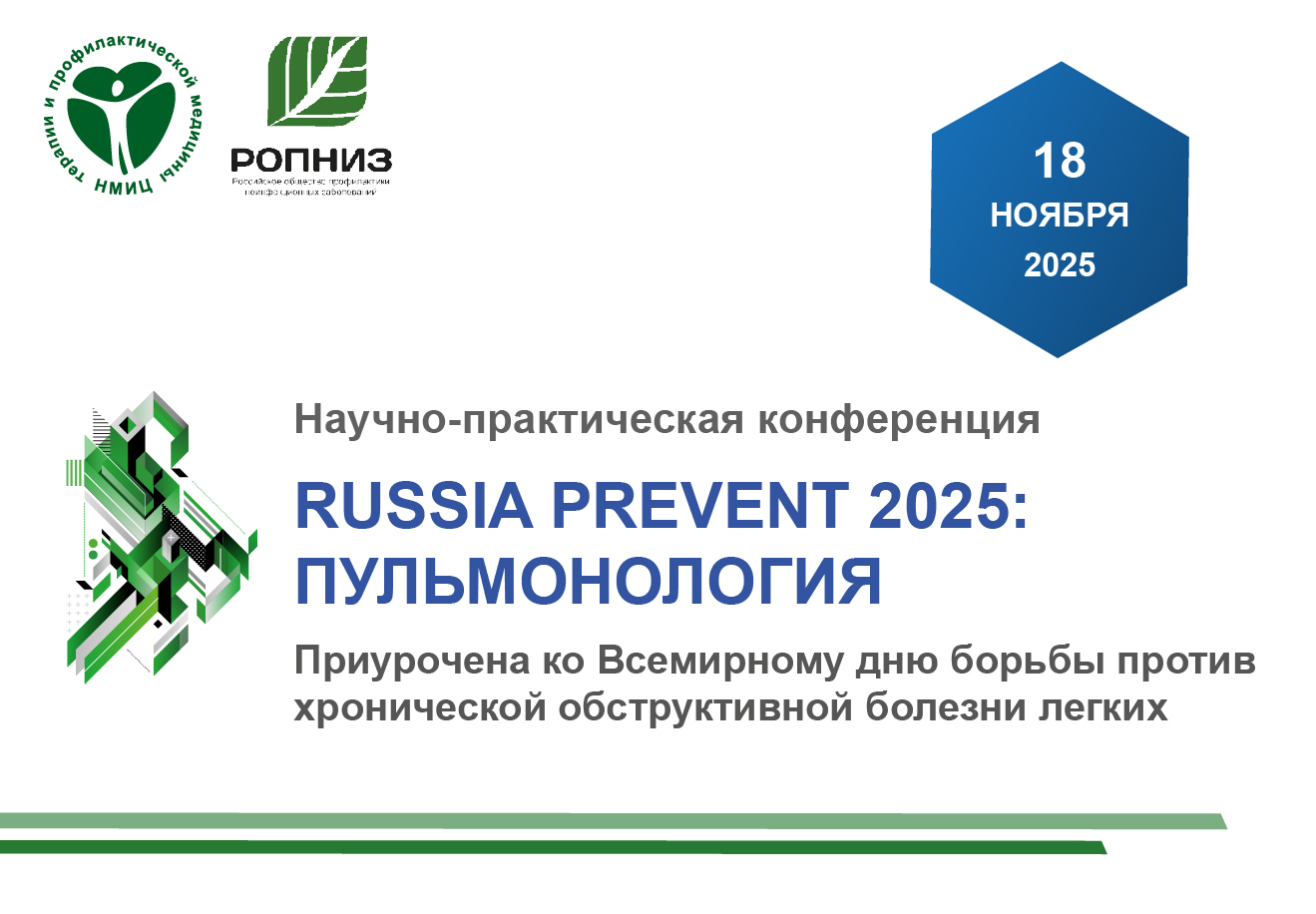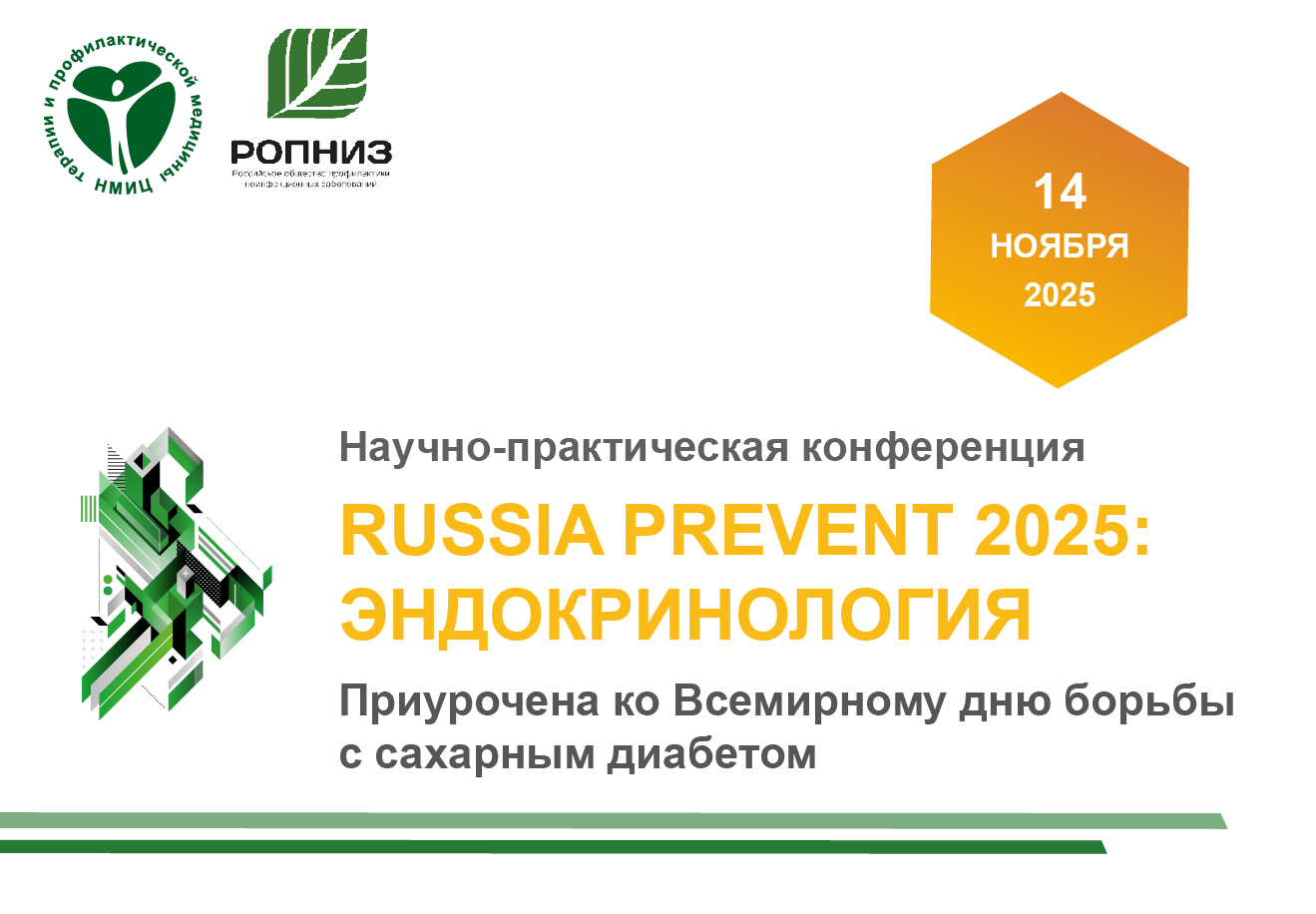Preventive Screening of Young People from the Perspective of Vascular Aging Phenotypes: the Role of Body Weight
https://doi.org/10.20996/1819-6446-2022-02-14
Abstract
Aim. To study the cardiovascular stiffness index CAVI in relation to main risk factors (RF) in young people from the point of their vascular aging phenotype and gender.
Material and methods. 264 young people (93 boys and 171 girls) at age of 18 to 25 years were examined. Vascular screening was performed with evaluating of CAVI. All subjects were divided into tertile groups for this indicator, taking into account gender. Such interval analysis of gender- and age- homogeneous sample allows to identify carriers of the phenotypes of premature (upper CAVI-tercile), normal (middle CAVI-tercile), and favorable or healthy (low CAVI-tercile) vascular aging. The first of them is also called EVA (early vascular aging) syndrome. In these groups, the incidence of carriers of insufficient, normal body mass (BM) and overweight were estimated. In three groups formed by BM indicator, the parameters of CAVI, hemodynamic and metabolic status in response to changes in BM were determined.
Results. Among of the presented RF, the correlation was significant for CAVI with a weight -0.428 (p<0.001) for R-CAVI, -0.453 (p<0.001) for L- CAVI, and even more significant with the BM index - at the level of -0.410 (p<0.001) for R-CAVI and -0.462 (p<0.001) for L-CAVI. This connection is found in boys. Among boys and girls with excessive BM, the most favorable vascular aging phenotype is observed 2.7 and 2.2 times more often than the EVA syndrome. In contrast, among girls with insufficient BM, a favorable vascular phenotype is detected almost twice rarely as compared with EVA syndrome. In similar group of boys, a healthy vascular phenotype is not observed at all. Among normal-weight boys and girls, the occurrence of the two extreme vascular phenotypes is almost identical. The arterial rigidity decrease on the background of BM increase occurs despite the сhanges of hemo- dynamic and metabolic indicators. This changes are especially pronounced in girls. The difference between the extreme weight categories in terms of R- CAVI and L-CAVI for boys was 1.4, while for girls it was only 0.3 for R-CAVI and 0.4 for L-CAVI.
Conclusion. When carrying out preventive measures among young people, one should not limit oneself to evaluating only traditional RF. Based on the concept of vascular aging, angiological screening should be more widely implemented. It will allow for more individualized preventive interventions among young people in the future.
About the Authors
M. Y. EvsevyevaRussian Federation
Maria Y. Evsevyeva.
Stavropol.
M. V. Eremin
Russian Federation
Mikhail V. Eremin.
Stavropol.
M. V. Rostovtseva
Russian Federation
Maria V. Rostovtseva.
Stavropol.
O. V. Sergeeva
Russian Federation
Oksana V. Sergeeva.
Stavropol.
A. V. Rusidi
Russian Federation
Anzhelika V. Rusidi.
Stavropol.
V. D. Kudryavtseva
Russian Federation
Victoria D. Kudryavtseva.
Stavropol.
E. V. Shchetinin
Russian Federation
Evgeny V. Shchetinin.
Stavropol.
References
1. Boytsov SA, Demkina AE, Oshchepkova EV, Dolgusheva YuA. Progress and Problems of Practical Cardiology in Russia at the Present Stage. Cardiologiia. 2019;59(3):53-9 (In Russ.) DOI:10.18087/cardio.2019.3.10242.
2. Burko NV, Avdeeva IV, Oleynikov VE, Boytsov SA. The Concept of Early Vascular Aging. Rational Pharmacotherapy in Cardiology. 2019;15(5):742-9 (In Russ.) DOI:10.20996/1819-6446-2019-15-5-742-749.
3. Boytsov SA, Shalnova SA, Deev AD. The epidemiological situation as a factor determining the strategy for reducing mortality in the Russian Federation. Ter Arkhiv. 2020;92(1):4-9 (In Russ.) DOI:10.26442/00403660.2020.01.000510.
4. Nilsson PM, McEniery CM. Early Vascular Aging in the Young: Influence of Birth Weight and Prematurity. In: Olsen M, Nilsson PM, Laurent S, eds. Early Vascular Aging (EVA): New Directions in Cardiovascular Protection. Amsterdam: Academic Press; 2015, p. 129-136. DOI:10.1016/B978-0-12-801387-8.00013-2.
5. Laurent S, Boutouyrie P, Cunha P, et al. Concept of Extremes in Vascular Aging From Early Vascular Aging to Supernormal Vascular Aging. Hypertension. 2019;74(2):218-28. DOI:10.1161/HYPERTENSIONAHA.119.12655.
6. Cunha PG, Boutouyrie P, Nilsson PM, Laurent S. Early Vascular Ageing (EVA): definitions and clinical applicability. Curr Hypertens Rev. 2017;13(1):8-15. DOI:10.2174/1573402113666170413094319.
7. Evsevyeva ME, Kumukova ZV. Features of psychological status in young people with signs of arterial hypertension. Russian Psychiatric Journal. 2007;(3):53-7 (In Russ.)
8. Evsevyeva ME, Miridzhanyan EM, Babunts IV, Pervushin YuV. Blood lipid profile and cardiovascular disease in family history among young people with various health status. Cardiovascular Therapy and Prevention. 2005;4(6-2):77-81 (In Russ.)
9. Diagnosis, treatment, prevention of obesity and associated diseases (national clinical guidelines, 2017) [cited 2020 Oct 10]. Available from: https://scardio.ru/content/Guidelines/project/Ozhirenie_klin_rek_proekt.pdf (In Russ.)
10. Golubnitschaja O. Flammer Syndrome in the Global Context – The “U-Shape” of Health Risks. In: Golubnitschaja O., ed. Flammer Syndrome: From Phenotype to Associated Pathologies, Prediction, Prevention and Personalisation. Advances in Predictive, Preventive and Personalised Medicine. Switzerland: Springer Nature AG; 2019. p.1-8.
11. Bhaskaran K, Dos-Santos-Silva I, Leon D, et al. Association of BMI with overall and cause-specific mortality: a population-based cohort study of 3·6 million adults in the UK. Lancet Diabetes Endocrinol. 2018;6(12):944-53. DOI:10.1016/S2213-8587(18)30288-2.
12. Chu C, Dai Y, Mu J, Yang R. Associations of risk factors in childhood with arterial stiffness 26 years later: the Hanzhong adolescent hypertension cohort. J Hypertens. 2017;35(1):10-5. DOI:10.1097/HJH.0000000000001242.
13. Isaykina OYu, Rozanov VB, Alexandrov AA, et al. Influence of Childhood and Adulthood Obesity on Arterial Stiffnes and Central Blood Pressure in Men. Rational Pharmacotherapy in Cardiology. 2018;14(4):543-51 (In Russ.) DOI:10.20996/1819-6446-2018-14-4-543-551.
14. Ceponiene I, Klumbiene J, Tamuleviciute-Prasciene E. Associations between risk factors in childhood and adulthood and subclinical atherosclerosis: the Kaunas Cardiovascular Risk Cohort Study. BMC Cardiovasc Disord. 2015;18(15):89-93. DOI:10.1186/s12872-015-0087-0.
15. Li P, Wang L, Liu C. Overweightness, obesity and arterial stiffness in healthy subjects: A systematic review and metaanalysis of literature studies. Postgrad Med. 2017;129(2):224-30. DOI:10.1080/00325481.2017.1268903.
16. Tolkunova KM, Rotar OP, Erina AM, et al. The concept of "supernormal" vascular aging -prevalence and determinants at the population level (in the framework of the ESSE-RF). Arterial Hypertension. 2020; 26(2):170-83 (In Russ.) DOI:10.18705/1607-419X-2020-26-2-170-183.
17. Dangardt F, Osika W, Volkmann R, et al. Obese children show increased intimal wall thickness and decreased pulse wave velocity. Clin Physiol Funct Imaging. 2008;28(5):287-93. DOI:10.1111/j.1475-097X.2008.00806.x.
18. Serés L, Lopez-Ayerbe J, Coll R, et al. Cardiopulmonary function and exercise capacity in patients with morbid obesity. Rev Esp Cardiol. 2003;56(6):594-600. DOI:10.1016/s0300-8932(03)76921-8.
19. Lurbe E, Torro I, Garcia-Vicent C, et al. Blood pressure and obesity exert independent influences on pulse wave velocity in youth. Hypertension. 2012;60(2):550-5. DOI:10.1161/HYPERTENSIONAHA.112.194746.
20. Phillips R, Alpert B, Schwingshackl А, et al. Inverse Relationship between Cardio-Ankle Vascular Index and Body Mass Index in Healthy Children. J Pediatr. 2015;167(2):361-5. DOI:10.1016/J.JPEDS.2015.04.042.
21. Charakida M, Jones A, Falaschetti E, et al. Childhood obesity and vascular phenotypes: a population study. J Am Coll Cardiol. 2012;60(25):2643-50. DOI:10.1016/j.jacc.2012.08.1017.
22. Luo XY, Qu SL, Tang ZH, et al. SIRT-1 in cardiovascular aging. Clin Chim Acta. 2014;437:106-14. DOI:10.1016/j.cca.2014.07.019.
23. Ong ZY. Breaking the intergenerational cycle of obesity with SIRT1. J Physiol 2019;597(2):369-70. DOI:10.1113/JP277280.
24. Laina A, Stellos K, Stamatelopoulos K. Vascular ageing: Underlying mechanisms and clinical implications. Exp Gerontol. 2018;109:16-30. DOI:10.1016/j.exger.2017.06.007.
25. Evsevyeva ME, Koshel VI, Eremin MV, et al. Students' health resources screening and formation of intrauniversity preventive environment: clinical, educational, instructional and pedogogical aspects. Medical Bulletin of the North Caucasus. 2015;10(1):64-9 (In Russ.)
26. Aatola H, Hutri‐Kähönen N, Juonala M, et al. Prospective Relationship of Change in Ideal Cardiovascular Health Status and Arterial Stiffness: The Cardiovascular Risk in Young Finns Study. J Am Heart Assoc. 2014;3(2):e000532. DOI:10.1161/JAHA.113.000532.
Review
For citations:
Evsevyeva M.Y., Eremin M.V., Rostovtseva M.V., Sergeeva O.V., Rusidi A.V., Kudryavtseva V.D., Shchetinin E.V. Preventive Screening of Young People from the Perspective of Vascular Aging Phenotypes: the Role of Body Weight. Rational Pharmacotherapy in Cardiology. 2022;18(1):42-48. (In Russ.) https://doi.org/10.20996/1819-6446-2022-02-14
















































